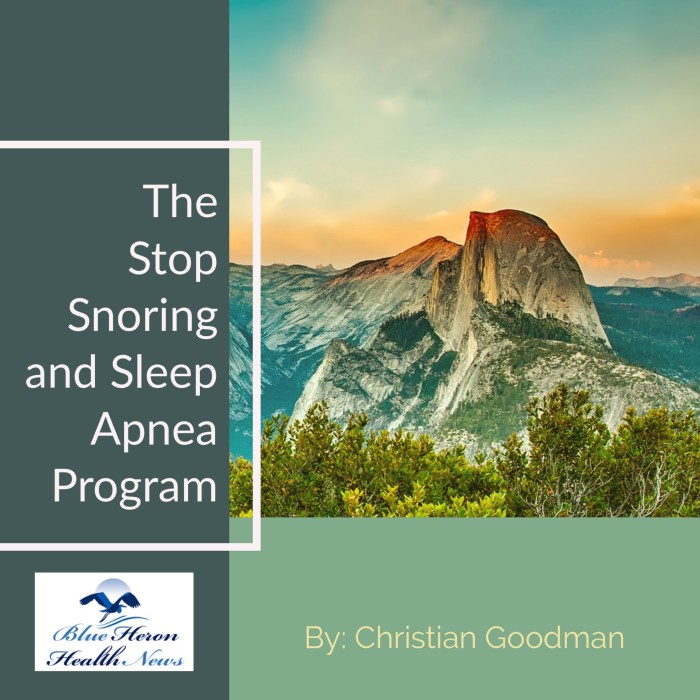
The Stop Snoring And Sleep Apnea Program™ By Christian Goodman f you have been suffering from snoring and sleep apnea and you are looking for permanent, cost effective and natural solution then The Stop Snoring and Sleep Apnea Program will help you. All strategies given have been tested and proven to work.
What are the types of sleep apnea?
Sleep apnea is a sleep disorder characterized by repeated interruptions in breathing during sleep. There are three primary types of sleep apnea, each with distinct causes and characteristics: Obstructive Sleep Apnea (OSA), Central Sleep Apnea (CSA), and Complex Sleep Apnea Syndrome (CompSAS), also known as Treatment-Emergent Central Sleep Apnea. Understanding these types is crucial for diagnosis and treatment. Here’s a detailed overview of each type:
1. Obstructive Sleep Apnea (OSA)
A. Definition
Obstructive Sleep Apnea is the most common form of sleep apnea. It occurs when the muscles in the back of the throat relax excessively during sleep, causing a temporary and often repeated blockage of the airway.
B. Mechanism
- Airway Obstruction: The relaxation of throat muscles leads to the collapse or narrowing of the airway, which obstructs airflow despite continued respiratory effort. This results in reduced oxygen levels in the blood.
- Arousal from Sleep: The brain senses the lack of oxygen and briefly wakes the individual to reopen the airway, often accompanied by gasping, choking, or snorting sounds. This cycle can occur multiple times per hour, disrupting normal sleep patterns.
C. Risk Factors
- Obesity: Excess weight, particularly around the neck, increases the likelihood of airway obstruction.
- Anatomical Factors: Structural features such as a thick neck, enlarged tonsils or adenoids, a deviated septum, or a recessed chin can contribute to OSA.
- Age: OSA is more common in older adults.
- Gender: Men are more likely to develop OSA than women, although the risk increases in women after menopause.
- Alcohol and Sedative Use: These substances relax the muscles of the throat, increasing the risk of airway collapse.
D. Symptoms
- Loud snoring
- Episodes of breathing cessation observed during sleep
- Gasping or choking during sleep
- Excessive daytime sleepiness
- Morning headaches
- Dry mouth or sore throat upon waking
- Irritability and mood changes
2. Central Sleep Apnea (CSA)
A. Definition
Central Sleep Apnea is less common than OSA and involves a dysfunction in the brain’s respiratory control centers. In CSA, the brain fails to send proper signals to the muscles that control breathing.
B. Mechanism
- Lack of Respiratory Effort: Unlike OSA, where the airway is physically blocked, CSA is characterized by the absence of effort to breathe. This results in interrupted breathing without airway obstruction.
- Cheyne-Stokes Respiration: CSA can be associated with a specific breathing pattern known as Cheyne-Stokes respiration, where breathing gradually increases and then decreases in depth and rate, followed by a period of apnea.
C. Risk Factors
- Underlying Medical Conditions: CSA is often associated with conditions such as heart failure, stroke, or other neurological disorders.
- Certain Medications: The use of opioids and other central nervous system depressants can increase the risk of CSA.
- High Altitude: Sleeping at high altitudes can sometimes lead to CSA due to lower oxygen levels in the environment.
D. Symptoms
- Episodes of breathing cessation during sleep, often without snoring
- Frequent awakenings with shortness of breath
- Difficulty staying asleep (insomnia)
- Excessive daytime sleepiness
- Morning headaches
3. Complex Sleep Apnea Syndrome (CompSAS)
A. Definition
Complex Sleep Apnea Syndrome, also known as Treatment-Emergent Central Sleep Apnea, is a condition in which an individual has characteristics of both obstructive and central sleep apnea. It typically becomes apparent when central apneas persist even after obstructive events have been treated.
B. Mechanism
- Combination of Factors: CompSAS occurs when a person treated for OSA with therapies such as CPAP continues to experience central apneas. This indicates a mixed pattern where the individual exhibits both obstructive and central breathing issues.
- Treatment-Emergent: The central apneas often emerge after initiating treatment for OSA, especially with CPAP, which can stabilize the upper airway but reveal underlying central instability in breathing control.
C. Risk Factors
- OSA Treatment: The use of CPAP or other airway devices to treat OSA can sometimes lead to the development of central apneas.
- Underlying Conditions: Similar to CSA, conditions like heart failure and neurological disorders can contribute to the development of CompSAS.
D. Symptoms
- Persistent apnea episodes despite treatment for OSA
- Symptoms similar to those of OSA and CSA, including daytime sleepiness, disrupted sleep, and morning headaches
Conclusion
Sleep apnea is a complex condition with three main types: Obstructive Sleep Apnea (OSA), Central Sleep Apnea (CSA), and Complex Sleep Apnea Syndrome (CompSAS). OSA involves physical airway obstruction, CSA is related to a failure in brain signaling for respiration, and CompSAS includes characteristics of both OSA and CSA. Understanding these types and their respective symptoms, causes, and risk factors is crucial for accurate diagnosis and effective treatment. Treatment options may include lifestyle changes, Continuous Positive Airway Pressure (CPAP) therapy, oral appliances, or surgery, depending on the type and severity of the sleep apnea. Early diagnosis and appropriate treatment are essential for improving sleep quality and reducing the risk of associated health complications.
The Stop Snoring And Sleep Apnea Program™ By Christian Goodman f you have been suffering from snoring and sleep apnea and you are looking for permanent, cost effective and natural solution then The Stop Snoring and Sleep Apnea Program will help you. All strategies given have been tested and proven to work.